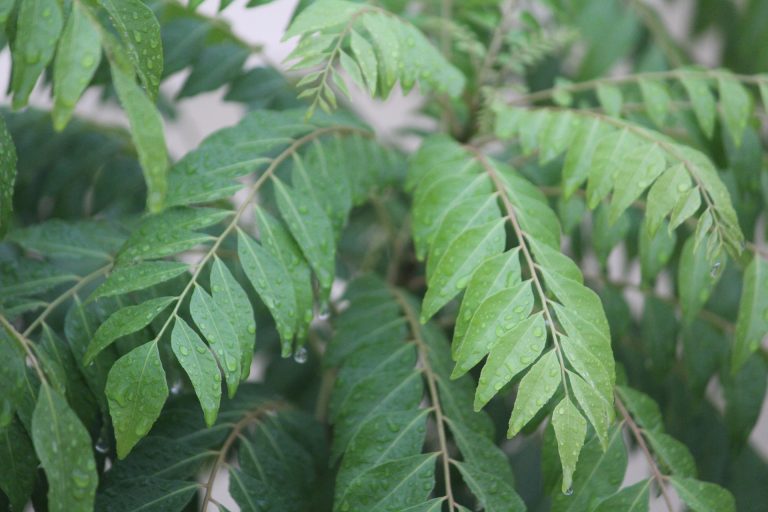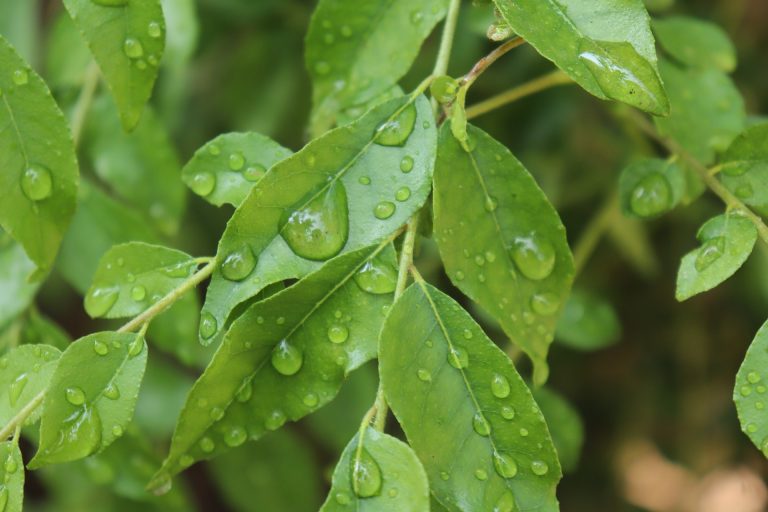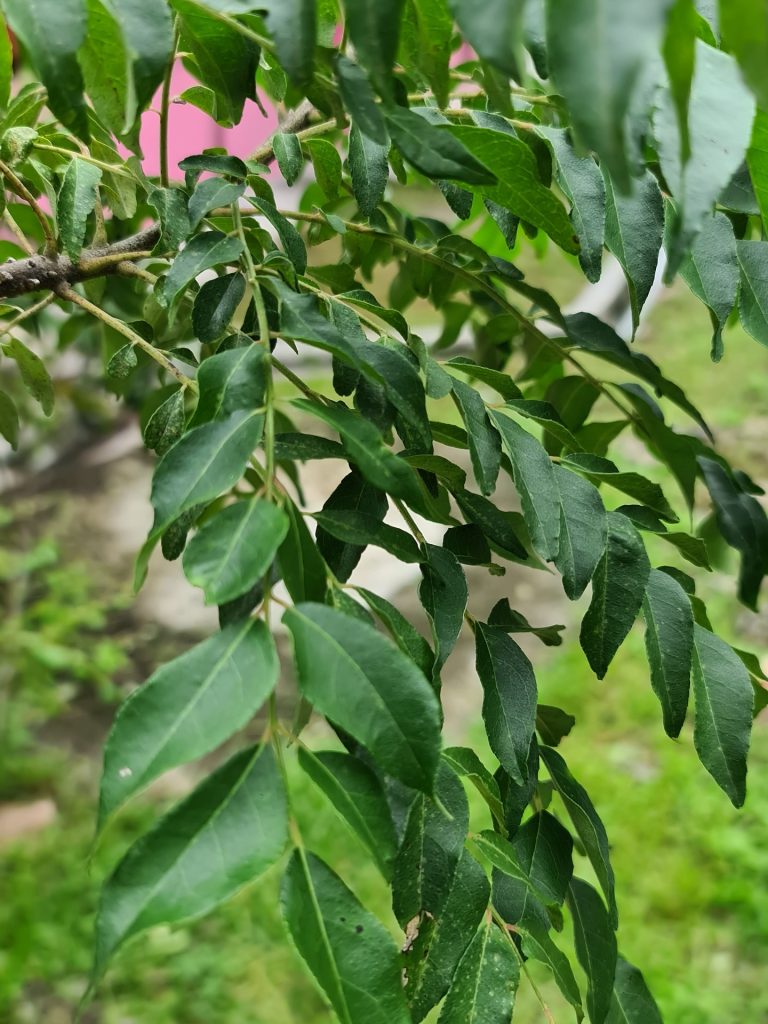Introduction
Curry leaf, scientifically known as Murraya koenigii, is an aromatic leaf native to the Indian subcontinent and a staple in South Asian and Southeast Asian cuisines. Beyond its culinary use, curry leaf holds a significant place in traditional medicine systems for its potential health benefits. This article provides a comprehensive research-based exploration of curry leaf, covering its botanical characteristics, historical significance, culinary uses, medicinal properties, economic importance, and future prospects.

Botanical Characteristics and Distribution
Curry leaf belongs to the Rutaceae family and is botanically classified as Murraya koenigii. It is a small to medium-sized tree native to the tropical regions of the Indian subcontinent, including India, Sri Lanka, and Myanmar. The tree typically grows up to 6 meters in height and produces clusters of small, fragrant white flowers that give way to small, shiny black berries.
The leaves of the curry leaf tree are highly aromatic, bearing a distinct spicy fragrance reminiscent of citrus and herbs. They are pinnate, with 11-21 leaflets arranged in pairs along the stem, and are characterized by their glossy dark green appearance.
Historical Significance and Cultural Importance
Curry leaf has been an integral part of Indian culinary and medicinal practices for centuries. It is believed to have originated in the southern regions of India, where it has been used traditionally in cooking for its flavor-enhancing properties and distinctive aroma. The name “curry leaf” itself reflects its association with curry dishes, although it is not related to curry powder.
In addition to its culinary uses, curry leaf holds cultural significance in Indian households and religious ceremonies. It is often used in auspicious rituals and symbolic offerings, signifying prosperity and well-being.

Culinary Uses and Flavor Profile
Curry leaves are prized for their unique flavor profile, which combines citrusy notes with a subtle bitterness and aromatic undertones. When fresh, curry leaves impart a bright, herbaceous flavor to dishes, enhancing the complexity of curries, soups, stews, rice dishes, and lentil preparations. They are typically added whole or torn into pieces and sautéed in hot oil at the beginning of cooking to release their aromatic oils.
In South Indian cuisine, curry leaves are a fundamental ingredient in tempering (tadka or tarka), a technique where spices and aromatics are briefly fried in oil to infuse dishes with their flavors. This process is integral to dishes such as sambar, rasam, and various vegetable stir-fries, imparting a distinctive South Indian flavor profile.
Nutritional Profile and Health Benefits
Curry leaves are rich in essential nutrients and bioactive compounds that contribute to their potential health benefits. They are a good source of vitamins A, B, C, and E, as well as minerals such as iron, calcium, and phosphorus. These nutrients play a major role in boosting immune function, promoting healty bones, and overall well-being.
Beyond their nutritional value, curry leaves contain phytochemicals with antioxidant, anti-inflammatory, and antimicrobial properties. These bioactive compounds, including alkaloids, flavonoids, and glycosides, contribute to curry leaf’s therapeutic potential in traditional medicine systems.

Medicinal Properties and Traditional Uses
In Ayurveda, the traditional medicine system of India, curry leaf is revered for its medicinal properties and therapeutic applications. It is considered beneficial for promoting digestion, alleviating gastrointestinal disorders, and supporting liver function. Curry leaf decoctions and extracts are used in Ayurvedic remedies to treat ailments such as indigestion, diarrhea, nausea, and abdominal pain.
Additionally, curry leaf is believed to have anti-diabetic properties, as studies have shown that it may help regulate blood sugar levels and improve insulin sensitivity. Its antioxidant and anti-inflammatory properties also contribute to its potential role in reducing oxidative stress and inflammation, which are implicated in chronic diseases such as cardiovascular disorders and arthritis.
Economic Importance and Global Trade
Curry leaf holds economic significance in both local markets and international trade, driven by its culinary popularity and medicinal applications. India is the largest producer and exporter of curry leaves, supplying domestic markets and meeting global demand from countries with significant South Asian diasporas.
The spice trade supports livelihoods for farmers, harvesters, and traders involved in curry leaf cultivation, harvesting, processing, and distribution. Variations in climate, seasonal availability, and market demand influence curry leaf prices and trade dynamics, highlighting its role in regional economies and global spice markets.
Efforts to promote sustainable farming practices, quality standards, and fair trade certifications aim to enhance environmental stewardship and socioeconomic equity within the curry leaf industry. These initiatives support smallholder farmers and foster biodiversity conservation in curry leaf-growing regions.
Challenges and Sustainability Issues
Despite its economic importance, curry leaf cultivation faces challenges such as climate change, pests, diseases, and water scarcity. Variability in rainfall patterns and temperature fluctuations can impact crop yields and quality, necessitating adaptive agricultural practices and research into resilient cultivars.
Sustainable farming methods, including organic cultivation and integrated pest management, are critical to mitigating environmental impacts and ensuring the long-term viability of curry leaf production. Collaboration between agricultural experts, researchers, and industry stakeholders is essential to addressing these challenges and promoting sustainable agriculture practices.

Future Prospects and Research Directions
Looking ahead, ongoing research into curry leaf’s phytochemical composition, health benefits, and culinary applications holds promise for future innovation. Advances in biotechnology, agronomy, and food science may enhance curry leaf cultivation techniques, post-harvest processing methods, and product diversification.
Furthermore, as global interest in natural remedies, functional foods, and plant-based nutrition grows, curry leaf may find new applications in pharmaceuticals, nutraceuticals, and culinary innovations. Consumer demand for authentic flavors and holistic wellness solutions continues to drive market expansion and product development opportunities.
Conclusion
In conclusion, curry leaf stands as a testament to its enduring legacy as a versatile culinary ingredient and medicinal marvel with profound cultural, culinary, and health benefits. From traditional kitchens to modern wellness practices, curry leaf continues to captivate taste buds, heal ailments, and inspire culinary creativity. As scientific exploration and sustainable practices evolve, curry leaf’s role in global markets and holistic health solutions is poised to flourish, enriching lives and landscapes alike.

